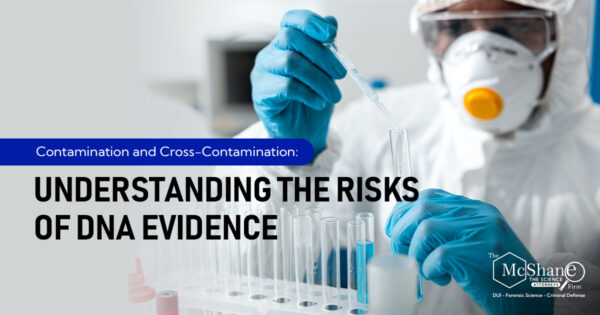There is a particular danger that attaches to DNA evidence. Thanks to the widespread viewing of fictional crime dramas, there is a built in prejudice that jurors have that DNA evidence means guilt. This is not so. It is not automatic. One way that DNA evidence can be falsely used in a case is due to DNA transfer. DNA transfer is the process by which DNA is transferred from one surface or object to another. This can occur through a variety of means, including direct contact, indirect contact, and airborne transfer. Yes, even a sneeze or a cough can place DNA pn people or objects innocently.

Direct contact transfer occurs when an individual comes into direct contact with an object, such as a doorknob or a coffee cup, leaving behind traces of their DNA.
Indirect contact transfer occurs when an individual comes into contact with an object that has already been touched by someone else, such as a car door or a phone.
Airborne transfer occurs when DNA is transferred through the air, such as through sneezing or coughing.
In addition to transfer, DNA samples can also be contaminated by other sources of DNA. This can occur when there is cross-contamination between samples, such as when a forensic analyst handles multiple samples without changing gloves or properly sanitizing their work area. There are no video cameras in crime labs. Other than relying on human integrity which is a dicey proposition, how can we know that cross-contamination protocols were adhered to?
Contamination can also occur through environmental factors, such as exposure to dust or other particles that may contain DNA from other sources.
One example of DNA transfer can be seen in cases of sexual assault. In some cases, the DNA found on the victim’s body may come from a perpetrator who did not have direct sexual contact with the victim. This can occur through indirect contact transfer, such as when the perpetrator touched a surface that the victim later came into contact with.
Another example of DNA transfer and contamination can be seen in the case of Amanda Knox, who was accused and later acquitted of the murder of her roommate in Italy. DNA evidence presented at trial showed the presence of Knox’s DNA on the handle of a knife that was found to contain the victim’s DNA. However, it was later discovered that the knife had been mishandled by forensic analysts, and that the DNA evidence had been contaminated.
In conclusion, DNA transfer and contamination can create challenges for forensic scientists, as they can lead to false conclusions and inaccurate results. It is important for investigators and forensic analysts to exercise caution and care when handling DNA samples, and to take steps to prevent contamination and cross-contamination. No one can take DNA evidence as a given.


